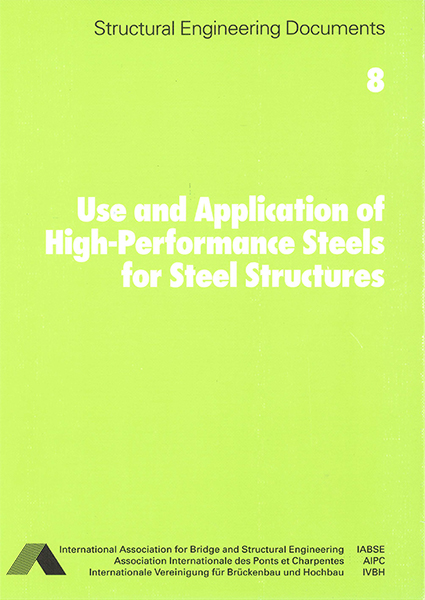Use and Application of High-Performance Steels for Steel Structures

|
|
|||||||||||
Détails bibliographiques
| Directeur(s): |
Hans-Peter Günther
|
||||
|---|---|---|---|---|---|
| Médium: | livre | ||||
| Langue(s): | anglais | ||||
| Editeur: | International Association for Bridge and Structural Engineering (IABSE) | ||||
| Publié à: | Zurich, Suisse | ||||
|
|||||
| Page(s): | 152 | ||||
| Nombre total de pages (du PDF): | 156 | ||||
| Année: | 2005 | ||||
| ISBN-10: | 3-85748-113-7 | ||||
| ISBN-13: | 978-3-85748-113-0 | ||||
| DOI: | 10.2749/sed008 | ||||
| Collection: | Structural Engineering Documents (No. 8) | ||||
| Couverture: | broché | ||||
| Remarques: |
New steel production processes have led to a remarkable improvement in steel products within the last few years, and now allows steels to be produced according to the desired mechanical and chemical properties. High-Performance Steel (HPS) is the designation given to this new generation of steels that offer higher performance not only in terms of strength but also toughness, weldability, cold formability and corrosion resistance, compared to the traditionally used mild steel grades. The development of HPS goes with today's increased demand for slender lightweight structures, as for example in bridge design and the design of high-rise buildings, where there is a strong requirement to use high-strength materials in combination with good execution and fabrication properties. However, on the structural engineering side there is a need for knowledge on these new steel grades, and quite often design codes do not provide sufficient information to fully exploit the advantageous properties of HPS. The present volume provides an overview of the development and application of HPS on an international level. This is done by giving information on, for example, the production process, the chemical and mechanical properties, the relevant design and fabrication standards and on recent research results. Approximately fifteen included examples of realised applications aim to provide detailed information based on existing technical solutions, and to point out the major benefits when using HPS in comparison to mild steels. The document is thus not a monograph but an assembly of contributions from different countries. lt is separated into chapters related to different countries, namely the USA, Canada, Japan and Europe, all of them providing a state-of-the-art report on HPS. |
||||
| Mots-clé: |
Structure / charpente en acier
|
||||
| Acheter chez: | |||||
| Copyright: | © International Association for Bridge and Structural Engineering | ||||
| License: | Cette oeuvre ne peut être utilisée sans la permission de l'auteur ou détenteur des droits. |
||||
Articles
| Auteur(s) | Titre | Page(s) |
|---|---|---|
| Driver, Robert G. | Fatigue Research on High-Performance Steels in Canada | 45-56 |
| Lwin, M. Myint | High-Performance Steels in the United States | 11-44 |
| Miki, Chitoshi | High-Performance Steels in Japan | 57-98 |
| Samuelsson, Anders | High-Performance Steels in Europe | 99-146 |
